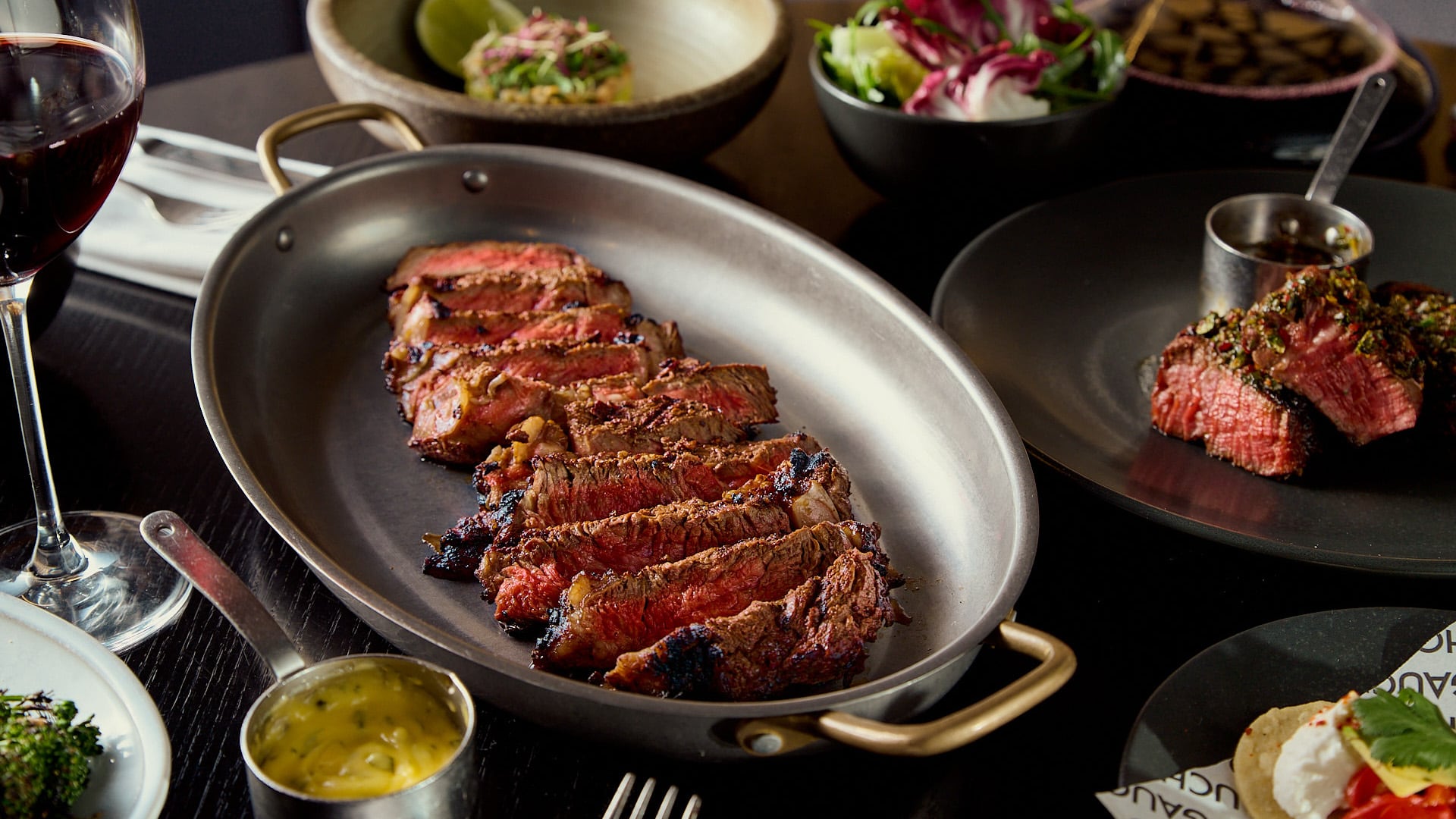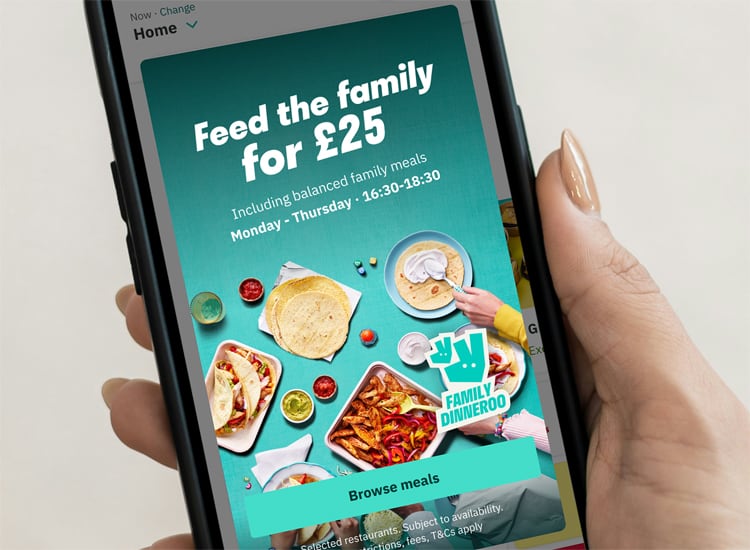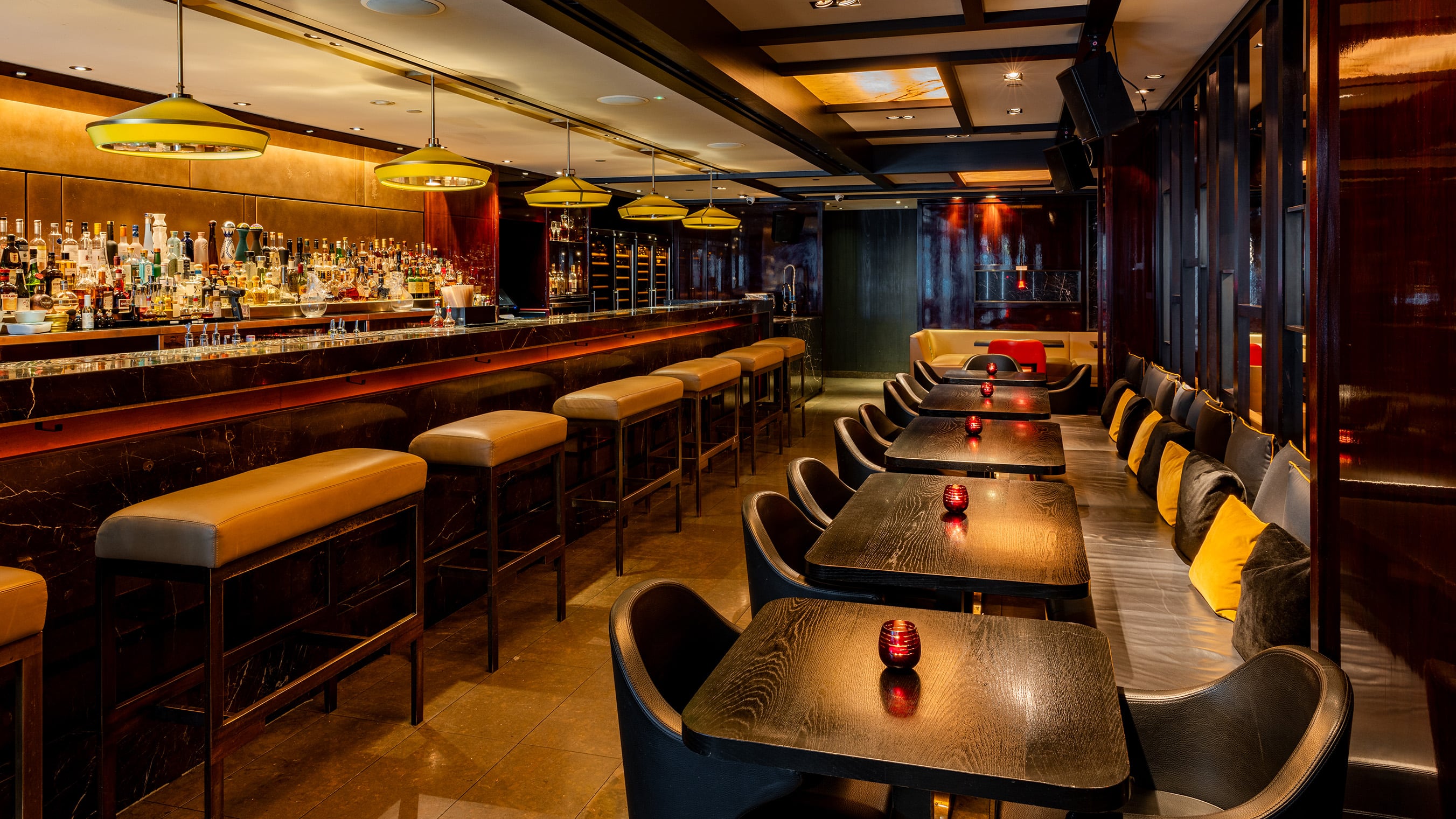If you’re after an illustrative example of the challenges restaurant operators currently face trying to get diners through their doors, just cast an eye at the promotional deals launched by steakhouse rivals Hawksmoor and Gaucho this summer.
Back in early July, Hawksmoor launched a lunch deal across its 10-strong UK estate that offered a 35-day dry-aged rump steak and a choice of side dish – including beef-dripping chips, baked sweet potato, buttered greens, or a lettuce and herb salad – for £19 between 12pm and 5:30pm Monday to Saturday. “This summer, Hawksmoor is officially flipping the steak script,” the press release read. “The award-winning steakhouse is doing something it’s definitely going to need to explain to the accountants… A proper steak. A proper side. For lunch, at just £19.”

Little more than two weeks later, Gaucho launched its own daytime deal, which neatly undercut Hawksmoor by offering a 180g rump steak with chips for just £15. Available Monday to Friday from opening until 6.30pm across all the Argentine-themed steakhouse chain’s 20 locations, Gaucho described the offer as ‘the best steak deal in the country’. “The £15 steak and chips offer is all about giving our guests what they want - high quality, nutritious meals that work with their busy schedules,” Gaucho marketing and sales director Mark Sansom said at the time. “It’s a premium, protein-packed dish served quickly, at an unbeatable price.”
Boosting covers
Both Hawksmoor and Gaucho’s offers lay bare, first and foremost, the challenges steakhouses face during the warmer months when customers default to lighter options and venues that have a brighter, summery feel. However, they are also indicative of a broader push by businesses across the sector right now to try and get as many diners through the door as possible, amid intense levels of competition and a squeeze on consumer spending.
“We are looking to grow covers across all dayparts and lunch has been a focus for us in the past few months,” says Sansom. Noting that the £15 steak and chips deal also includes an ‘express’ element, whereby diners can be ‘in and out in 30 minutes’, he adds: “[The offer] has been designed to accommodate those diners who want excellent value with a quick turnaround. With the price of luxury sandwiches and salads creeping up to around this price point, we believe it’s a great alternative for guests looking for a restaurant experience at around the same price.
“We have found that the restaurants in our city centre locations have an appetite for an excellent value offering served at pace, which is exactly what we are looking to provide with this, and our guests are responding extremely well to it.”
The word discounting is a worrying thing. It undervalues and undermines what you’re doing. A better way to guise it is through a promotion that targets a slot within the day.
Ratnesh Bagdai
Lunchtime deals and express menus are by no means a new phenomenon. They have long been tools used, particularly in the larger casual dining space, to get bums on seats and increase churn at times when the peaks have turned to troughs. But now, perhaps more than ever, there is a fevered clamour among operators across the industry – small scale and large, from QSR to premium casual – to target promotions to specific times and dayparts as a means for boosting business.
“It’s an invitation to come in at a time when we need the cover,” explains Ratnesh Bagdai, co-owner at Brindisa Kitchens and Bar Kroketa, who also acts as accountant and advisor to more than 50 restaurants in the capital through his business, RNB Accountants Ltd. “The alternative is discounting, but as someone who has been in the industry for 25 years, the word discounting is a worrying thing. It undervalues and undermines what you’re doing. A better way to guise it is through a promotion that targets a slot within the day.”
Deals, deals, deals!
Tellingly, Gaucho followed up its lunchtime deal with the launch of another promotion last month; its first-ever evening set menu offering three courses for just £29.50 per person. The deal is available every Sunday to Wednesday, typically considered quieter trading days, across all Gaucho locations from 5pm until close. Options include starters of Ecuadorian ceviche or Argentinian sausage and red pepper confit; a 200g rump steak main; and Argentine tres leches cake for dessert.
Much of the emphasis is on targeting promotions to the weekday trade. Take Côte, which recently launched an offer whereby one of 70-strong brasserie chain’s signature dishes is available for £10 between Mondays and Fridays, saving diners up to £11.95 per dish. This includes steak frites (which usually costs £17.50) on Mondays, salmon béarnaise (usually £19.50) on Tuesdays, and beef bourguignon (usually £21.95) on Thursdays.
Then there’s Pizza Express, a long-standing bastion of the UK’s casual dining scene, which recently introduced a ‘bottomless’ pizza offer for the first time. The deal, which was designed to fill the group’s 360 UK restaurants during quieter ‘shoulder’ periods, ran throughout August and offered customers 90 minutes of unlimited pizza for £17.50 per adult/£10 per child.

It’s not just diners who are out and about that are being targeted, either. Last month, Deliveroo launched what it calls a ‘mid-week dinner market’ offer called Family Dinneroo. Initially launched in partnership with around 30 restaurant brands including Bill’s, Pizza Express, Wagamama and Dishoom, Family Dinneroo offers a curated set of shareable meals designed to serve up to four people, for £25 or less. These dishes are available Monday to Thursday between 4.30pm and 6.30pm.
Noting that it is the first time Deliveroo has worked with its partners to significantly adapt menu formats to create dishes containing multiple portions suitable for sharing, the delivery platform references increasing family usage during quieter periods of the week as a key benefit to restaurants involved in the scheme. “The service offers the ability to schedule deliveries, with families able to order their dishes up to five days in advance, helping parents pre-plan their weekly schedules, and allowing restaurants to utilise their existing kitchen space and workforce to meet new customer demand outside of peak trading hours,” the press notes read.
Covers vs margins
For Bagdai, targeted promotions are a key means for driving covers in today’s tough trading environment. He notes the downturn of late-night diners in the capital as a case in point. “London is dead after 10pm right now. I think we’re in dire straits, particularly in central London and Soho, and it wasn’t like that 10 to 15 years ago. Providing a facility of promotions in that instance, perhaps a separate menu, can help bring people in.”
But what of the cost to the business? Such promotions inevitably cause a hit to a restaurant’s bottom line; does it pay to prioritise covers over margins in this way?
“There’s a lot of concentration on margins right now,” Bagdai continues. “It’s something a lot of us are more fascinated on right now. There’s an over effort on margins, margins, margins. But covers are more important in my opinion. As an industry we need to concentrate on customer, customer, customer, and cover, cover, cover.
“If the customer spends a pound, we need to make sure that whatever our margins are we hit it. And we can do that through our pricing, our stock policy, and portion control. The problem is we need the customer. We need that £1 through the door. So, for me it’s all about covers. The more covers you have, the more atmosphere you create. If you do a good job, the more customers will return.”
There’s an over effort on margins, margins, margins. But covers are more important in my opinion. As an industry we need to concentrate on customer, customer, customer, and cover, cover, cover.
Ratnesh Bagdai
Sansom echoes this. “By focusing on growing covers, we deliver busier, buzzing restaurants that mean we can optimise our labour costs and improve gross margin,” he says. “We’ve seen great success in recent months around our lunch covers in particular and are of the opinion that if we give guests an awesome experience with our lunch offering, we will be front of mind when they’re looking for the full-on Gaucho experience.”
Tao Group Hospitality is another business that is placing more emphasis on covers over margins, albeit through a different means. Back in June the US-owned business, whose portfolio includes London restaurants Hakkasan and Yauatcha, introduced new menus that offered more accessible prices at both brands in a bid to ‘broaden appeal while maintaining premium positioning’.
Price alterations for dishes included Hakkasan’s charcoal grilled Japanese A5 wagyu beef with sake and black truffle honey sauce moving from £105 to £95; and the price of Yauatcha’s £28 crispy duck salad being halved. The price of some cocktails has also been reduced, with Hakkasan’s Sea of Clouds dropping from £24 to £19 and Yauatcha’s Szechuan margarita going from £16 to £14.

Tao Group Hospitality’s UK boss Jared Boles says the decreases were achieved through a combination of reducing portion size and lowering operating margins. “You can’t raise prices in an empty restaurant,” he says. “Margins might be tighter than ever, but consumers are experiencing financial anxiety and that is causing them to go out less. Over the past two quarters we have looked to reposition our offering and try and cast a wider net.”
The pricing review was triggered by a year-on-year drop in covers and decreasing budgets for both corporate and private events. “Prices have continued to increase, and the industry now finds itself in a position in which people simply can’t afford to go out,” Boles continues. “If we can regain 10% of the income we have lost by raising our guest base by 10%, we will have been successful.”


